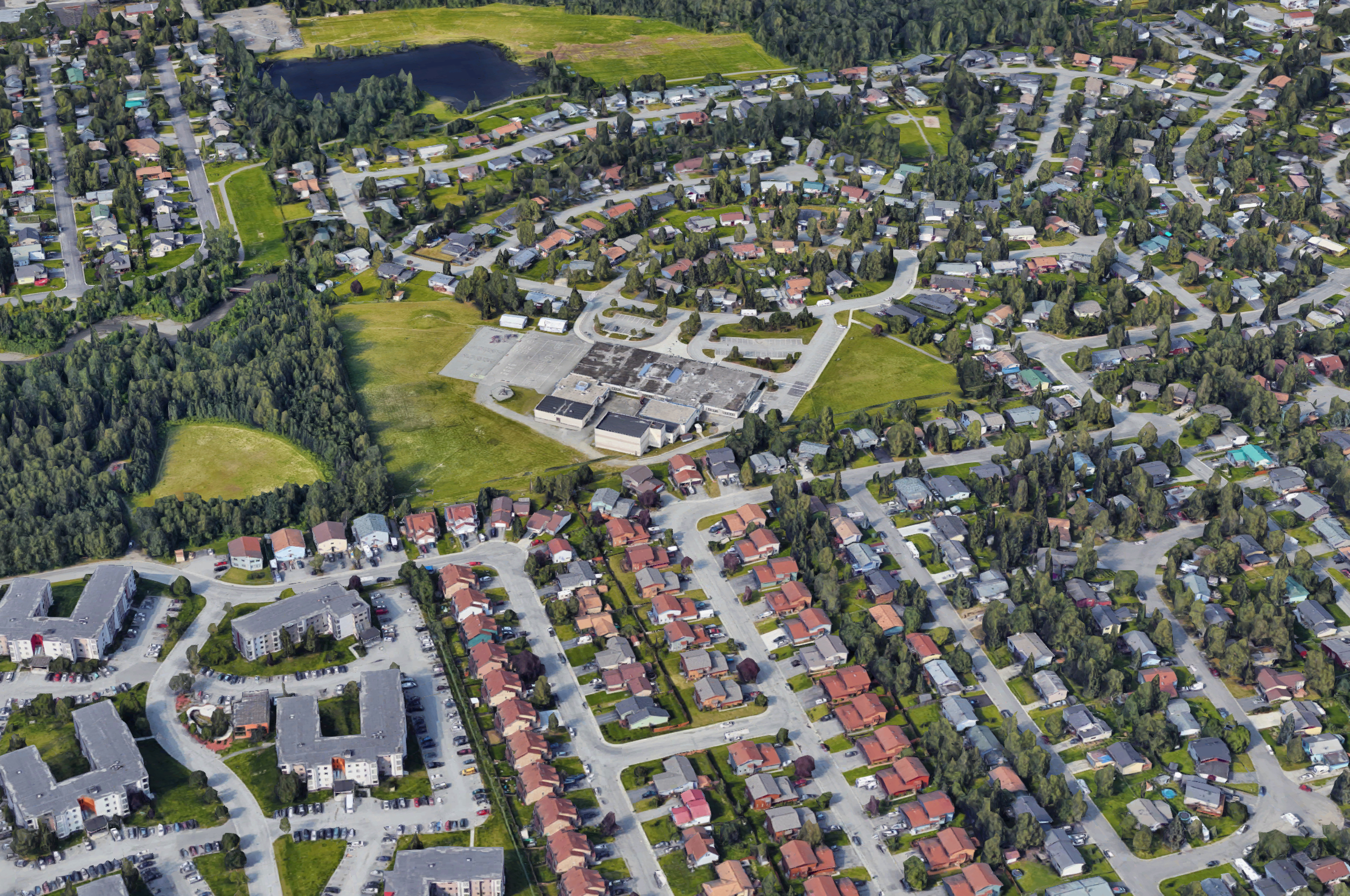Whaley School’s needs are driving Tudor Elementary’s fate
This article was submitted to ADN as a letter to the editor and has been republished on intrinsic.city with the author’s permission.
On Halloween, I walked the streets around Tudor Elementary, reveling in the growing community of young families that we’ve noted in the four years since we moved here. The neighborhood was alive with children trick-or-treating in this neighborhood because their parents valued the location of the 1967 school at its heart. It’s not a neighborhood with prestige, cute houses, or views, but it is a place where you can be confident in your second grader walking to school, where you will meet their friends and other parents on the playground at the end of the day. It is the main feature of this neighborhood and a geographically isolated school. It’s the only one in the mixed residential tracts bounded by Tudor, Dowling, and Elmore roads, as well as the Seward Highway, and the next closest elementary school is unusually distant at a mile and a half away.
When Tudor’s closure was proposed the next day, I figured, “Well, the population is shrinking, and hard things will happen, but I have no good reason why it shouldn’t happen to us.” I knew the Anchorage School District had conducted surveys seeking input and analyzed a matrix of school stats to inform their decisions. Yet, I had my share of questions: Why was Tudor closing ahead of schools with lower populations and utilization? Why does Inlet View get a brand-new building for 100 fewer kids?
Does their statistical snapshot capture all the parents walking these streets with strollers and toddlers? Would a mini-census show a coming wave of growth? Tudor is buried deeply within slow neighborhood streets—is it that they want their schools to be easier to access when it snows?
On Monday, we learned that the district plans to repurpose the Tudor building as a new home for the pre-K-to-12th grade Whaley School — a special program not available for attendance by neighborhood children. On Wednesday, a school board member attended our Tudor PTA meeting and pointed out that Tudor is not even in the bottom half of the 45 schools evaluated in ASD’s analytical matrix, leading me to
conclude that while some schools are being closed based on the matrix, Tudor is being sacrificed to solve Whaley’s problems.
Whaley’s current building is objectively terrible, and Tudor, in turn, is among the least renovated schools remaining in the district. Understandably, ASD sees a synergy in aligning Tudor’s deferred maintenance costs with the creation of a new Whaley — a smart fiscal move and one that also sidesteps logistical hurdles that make it very hard to overhaul Whaley’s current building. When I was in fifth grade at Taku Elementary, ASD bused my class to another building for the year while they remodeled, but no
temporary building can provide the specialized spaces and features built to support the behavioral challenges of Whaley’s student body. For instance, ASD was just forced to modify the current Whaley building with new soundproof calm-down rooms in compliance with a 2023 federal court mandate requiring ASD to retire their “seclusion” practices in favor of other de-escalation techniques designed for response to behavioral episodes.
It’s not feasible for ASD to duplicate such features in a temporary building. Among the wide range of students at Whaley are many intensely troubled children, teenagers, and even legal adults whose challenges have necessitated their removal from general student populations. The tough and unglamorous work that students and staff do at Whaley is incredible to me. Given the difficulty of their conditions, they frankly deserve the finest facility in this district. Creating a new and improved Whaley is clearly a worthy endeavor, but people familiar with the school know that Whaley comes with real and visible security concerns. Fiscal strategy aside, nobody would propose placing it in the middle of a residential neighborhood, sharing a fence with 27 residential backyards, surrounded by people who arranged their lives and investments to be in intimate proximity to an elementary school.
While all the affected neighborhoods will lose a treasured asset, Tudor is the only school proposed to be replaced with a program that cannot directly serve the children around it and that, fairly or not, will always be viewed as a liability. The appeal and operation of our neighborhood will be drastically altered as our children are bused to a distant school, passing another student body that is bused in from all over town. This constitutes a neighborhood downgrade well beyond the other neighborhoods facing closure alone or replacement with a charter school. For these reasons, I urge ASD to rescind their proposed Whaley move in favor of a broader assessment of the best location for that program and in pursuit of a more equitable distribution of the impacts of their rightsizing efforts.


Miles Garrod is a lifelong Anchorage resident and architect who lives near Tudor Elementary.



